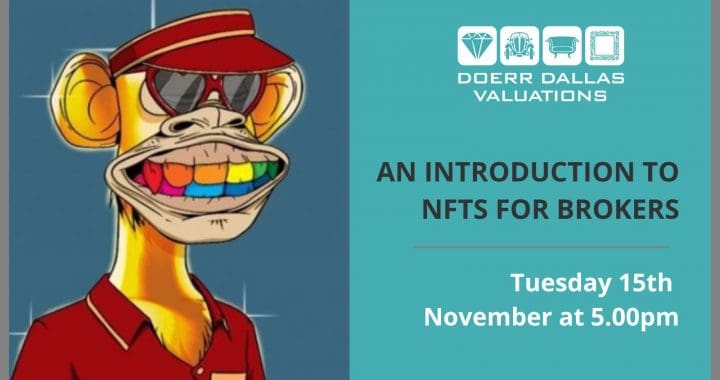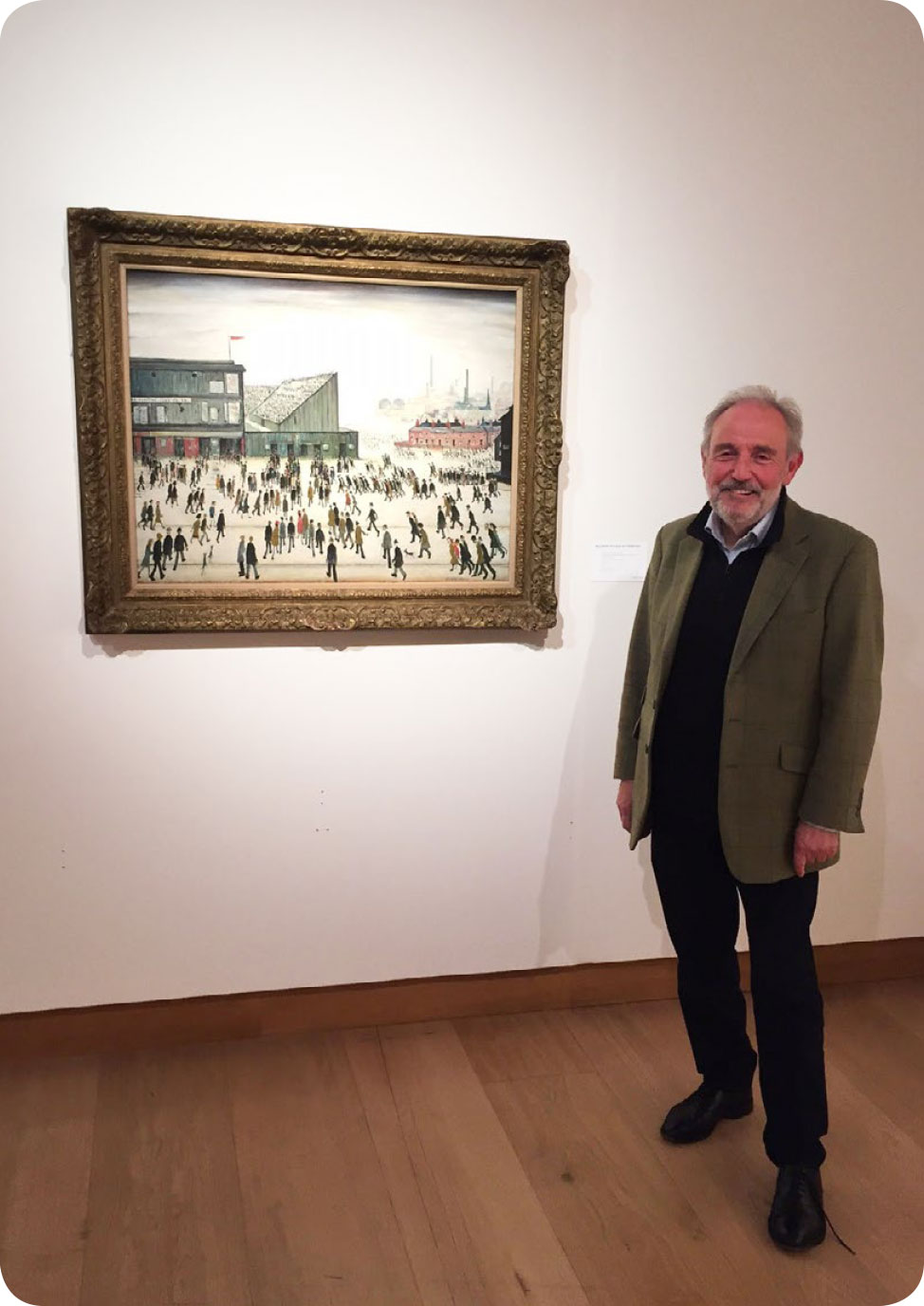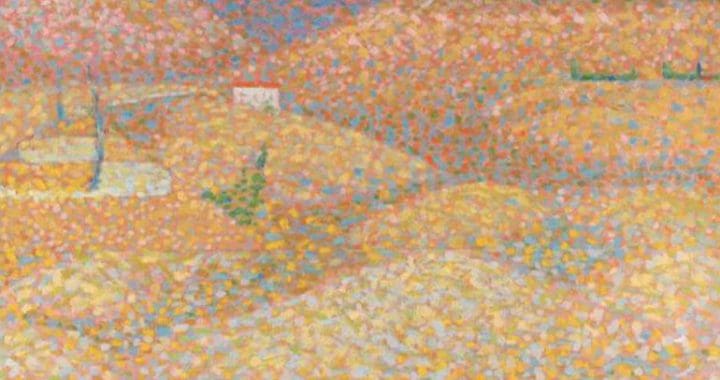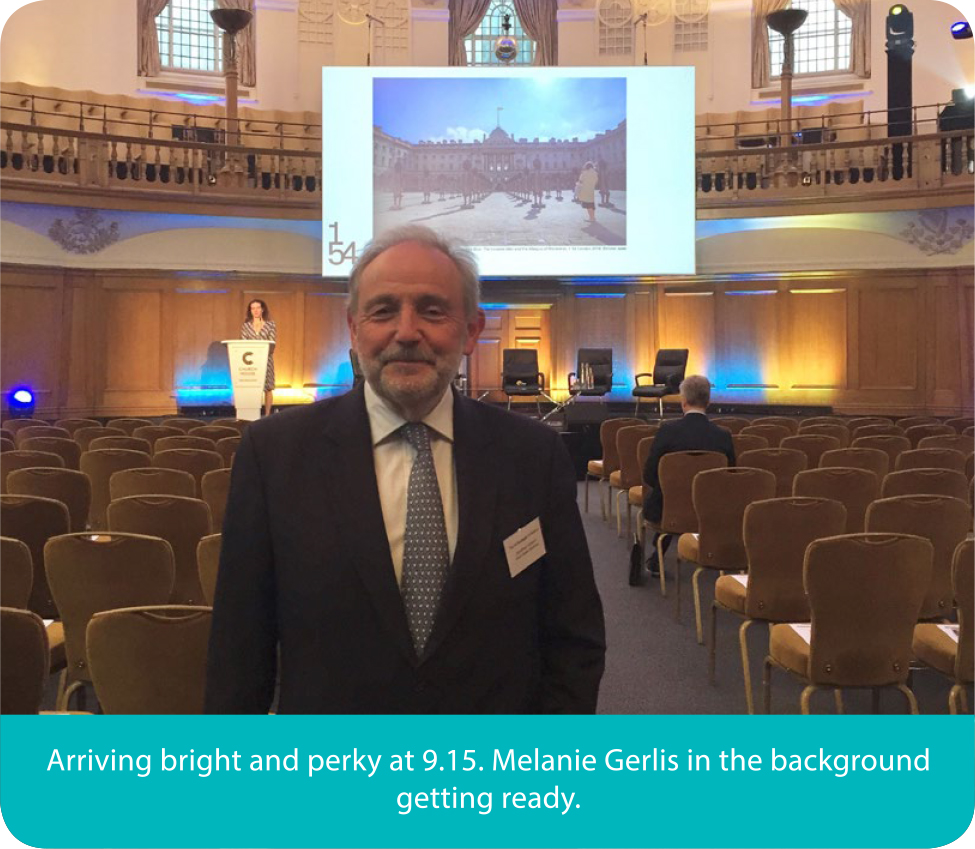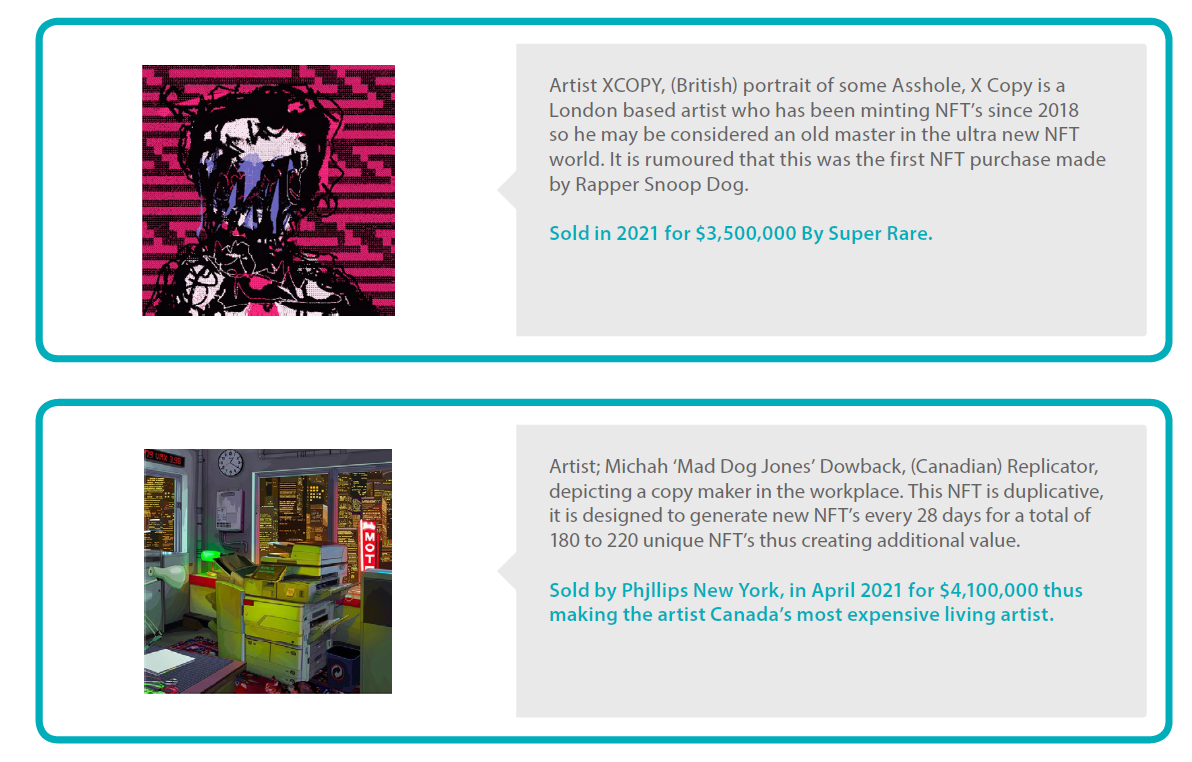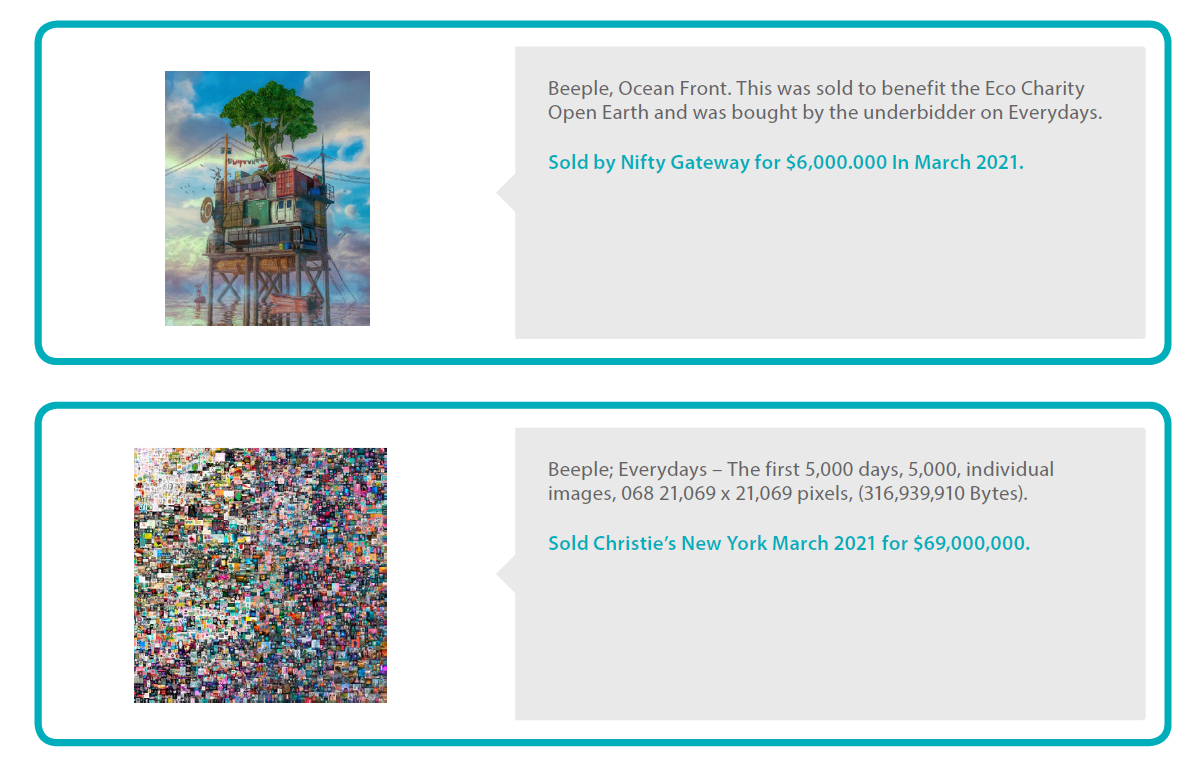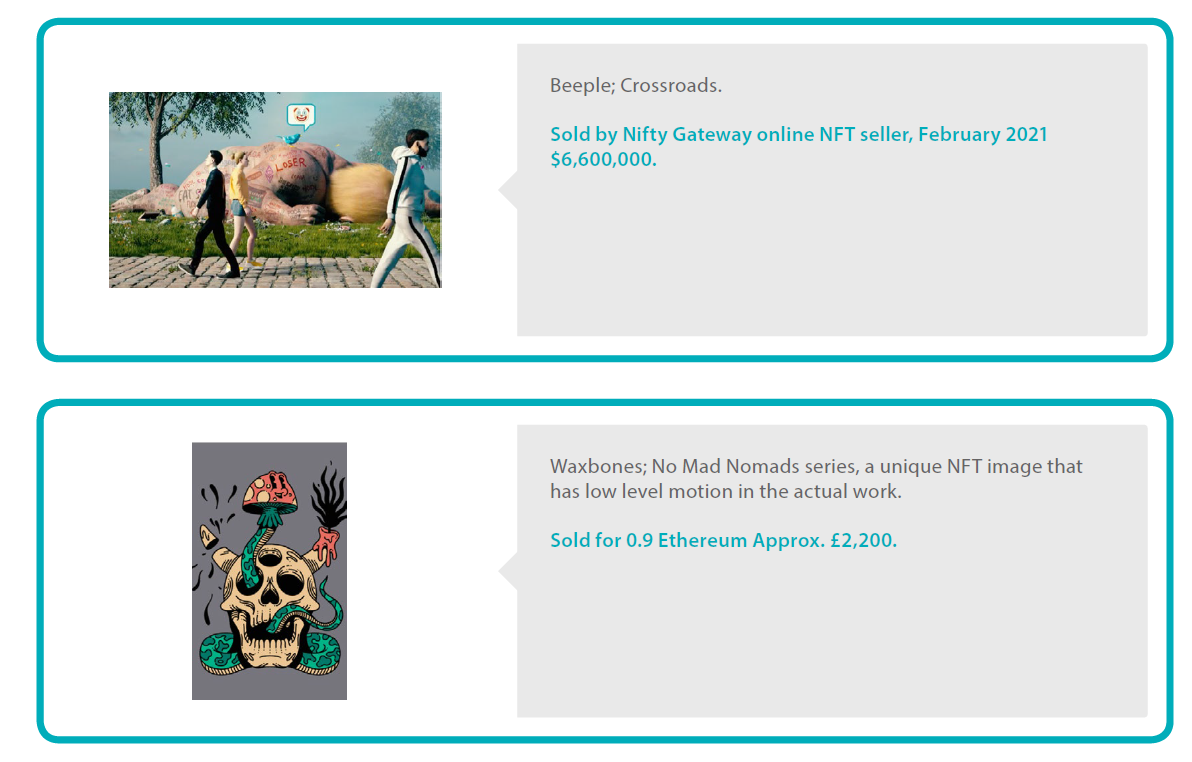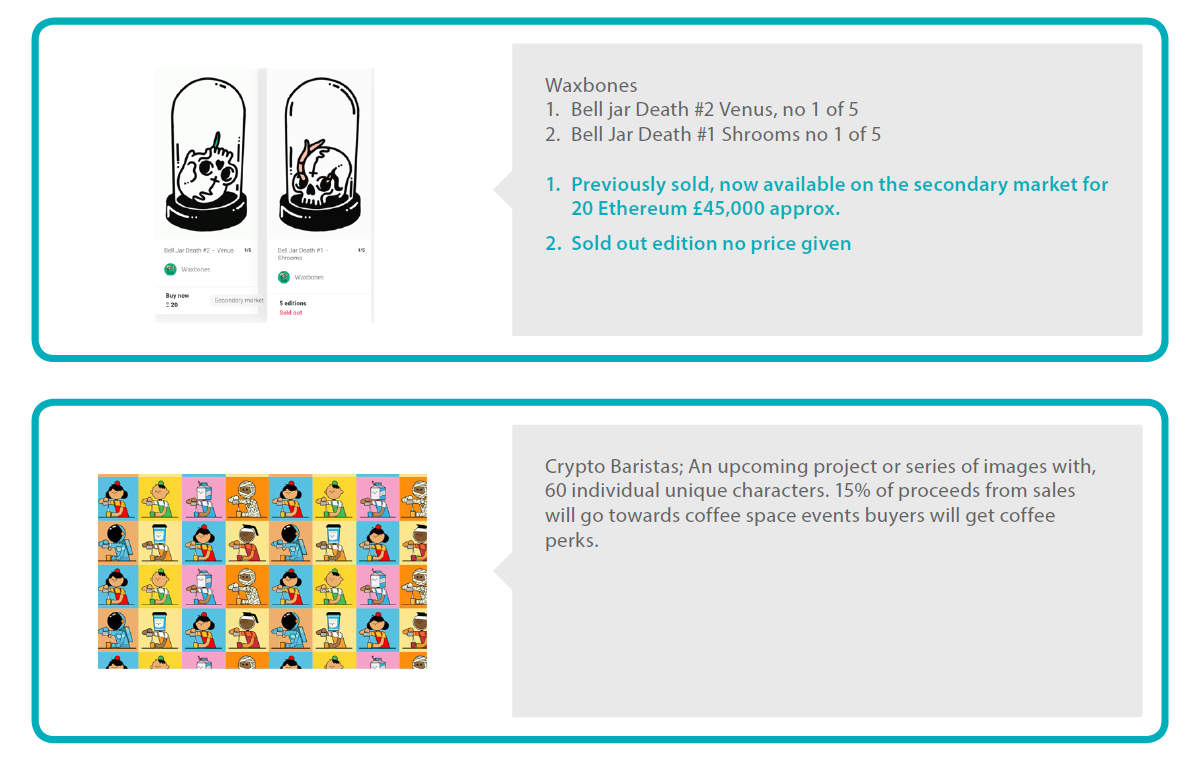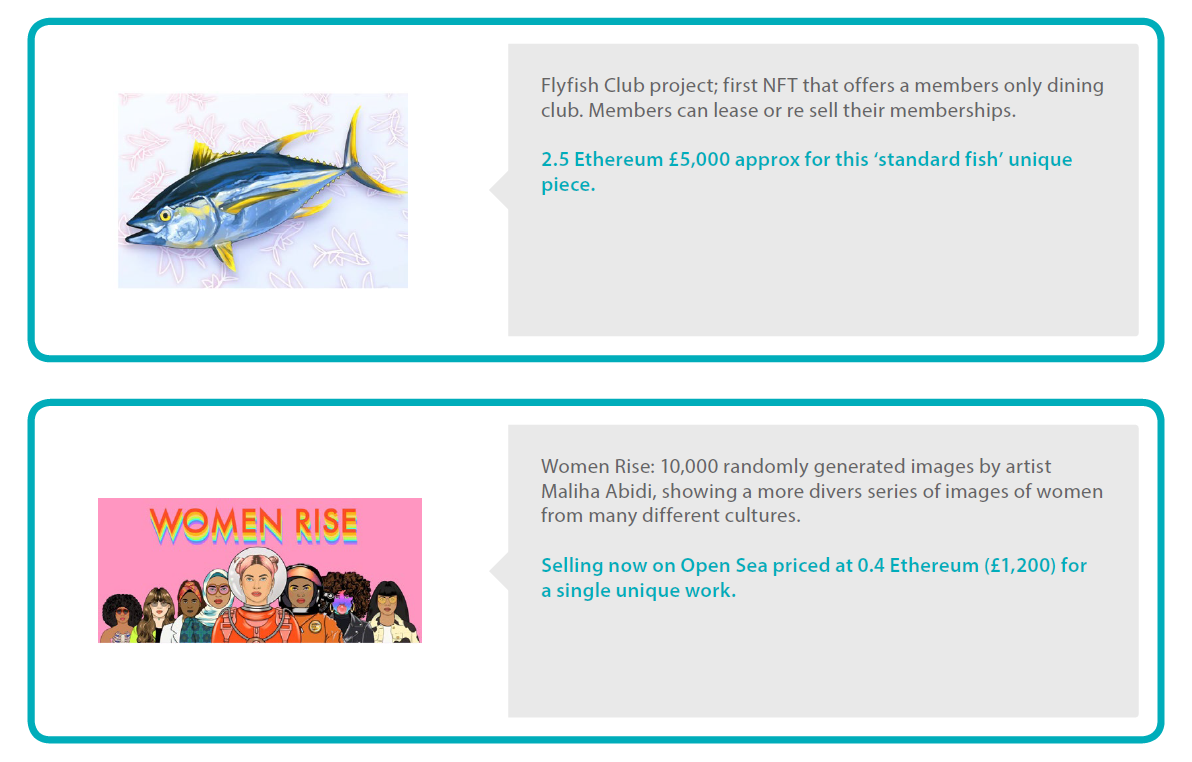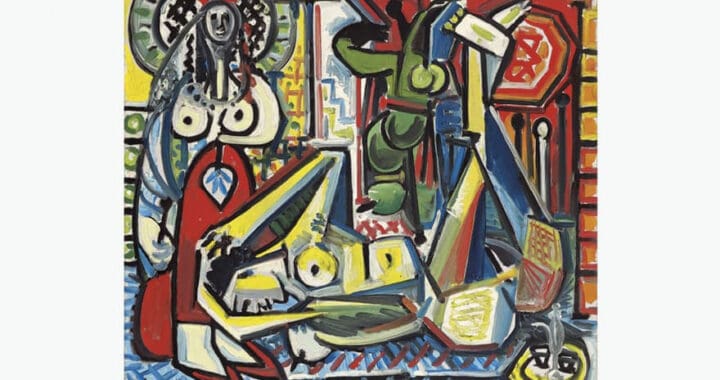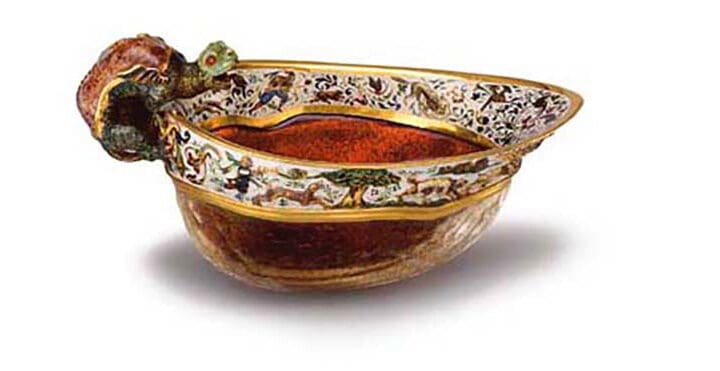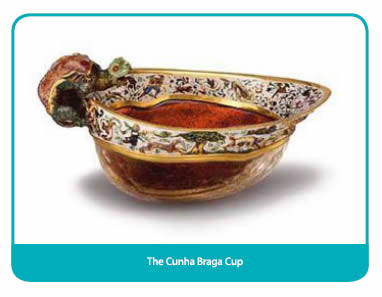In the early 1950s, L.S. Lowry completed a very small number of large industrial landscape compositions, each of which included many, if not all, of his favourite motifs, people, chimneys, dogs, children, houses, lakes, etc… this particular 1953 ‘Industrial’ features another favourite, Stockport Viaduct, seen towards the rear of the composition.
In a letter from Lowry to the Tate about the 1955 large Industrial in their collection, Lowry writes ‘this is a composite picture, a blank canvas, I didn’t have the slightest idea when I started the picture, but it eventually came out the way you see it, this is the way I like working best.’
In fact, there are only four of these monumental Lowry industrial landscapes, all were painted between 1950 and 1955. The picture below, which I first encountered in 1988, dates from 1953 and was at the time, the only one of the four still left in private hands and available to own. The other three were already part of permanent Museum collections.
Then one day in the late summer of 1988 I received a call out of the blue from the director of a kitchen manufacturer in Manchester, he told me that they owned a Lowry ‘industrial’ painting and that for fiduciary reasons the company needed to sell it before the end of the year and could we (Christie’s) help. At this stage, I knew very little about the picture, as back then there was no email or internet, so I was flying blind as to whether it was th one I was thinking it was or a print or something else…
I put the phone down having made an appointment to see it the next day and I made my way up to Manchester, arriving at an unpromising anonymous industrial estate just outside the centre.

As I made my way up to the top floor, I notice there was nothing on the walls anywhere except for a few Lowry poster type prints. I was beginning to think I was on a wild goose chase when as I turned a corner, there in front of me on the director’s office wall was an utterly monumental and glorious 45” x 60” inch industrial landscape oil painting, truly a Lowry masterpiece!!
I was blown away by it but manage to compose myself enough for a conversation with the MD who was charming and easy to talk to. I established that in principle the company was very happy to sell it with me, at Christie’s in our upcoming 11th November 1988 auction with a then world record estimate of £100,00-150,000. Today it would probably be £3-5 million! However, in every good auction tale, there is a wrinkle. In this case the MD had offered the Salford Art Gallery the option to buy the picture before the auction if they could raise £100,000 in time. Back then, Salford City Council’s Lowry collection was housed on the top floor of the Salford Museum and Art Gallery, in Peel Park, Salford. The state of the art ‘Lowry’ Art Gallery and theatre complex was just a twinkle in somebody’s eye.
Let’s step back for a moment and set the scene back in 1988: the Art market, particularly Modern and Impressionist Art, was roaring away. Contemporary Art was 30 years away from being the dominant force it is today and the market for Art and Antiques was at an all-time high, even today some of the prices achieved back then have never been beaten and buyers were hungry for rare pictures. Interestingly, also at this time Donald Trump was in London making his first ‘state’ visit. He and his wife Ivana were in town and appeared as guests on Terry Wogan’s nightly TV chat show, Wogan even makes a rare ‘slip up’ by calling Ivana, ‘Diana’. Donald doesn’t even notice the gaff as he launches into his ideas on how he ‘could make America great again’.
A few days after my visit the Lowry picture arrived safely from Manchester and I was relieved and pleased to see it matched up with all our research so we could get on and prepare our catalogue entry and get it photographed for the upcoming 11th November auction, where it was included as lot 480. The catalogue came out in the second week of October and calls began to come in for the various lots, including lot 480, which was beginning to create a real buzz around it. I remember one major dealer coming in to view it before the public viewing and telling me that he thought it could make £250,000 or more, and that he was prepared to bid up to £350,000, a price well over three times the then world record. This would have set the Lowry market alight which is what I was secretly hoping for…
Of course, I was also hoping Salford would be able to acquire the picture and as the auction day drew nearer this looked increasingly likely and indeed, I think by Wednesday 9th November I had verbal followed by written confirmation that Salford has purchased the piece and the picture was duly withdrawn from sale and later transported up to Salford where it hangs today in pride of place in the Lowry Salford Quays next to the new Media Centre.
This was truly one that got away and looking back I am certain that if it had been offered there was enough presale interest for it to have made a huge price, thus electrifying the Lowry market 20 years earlier. Had that been the case, who knows where prices would be now!!






